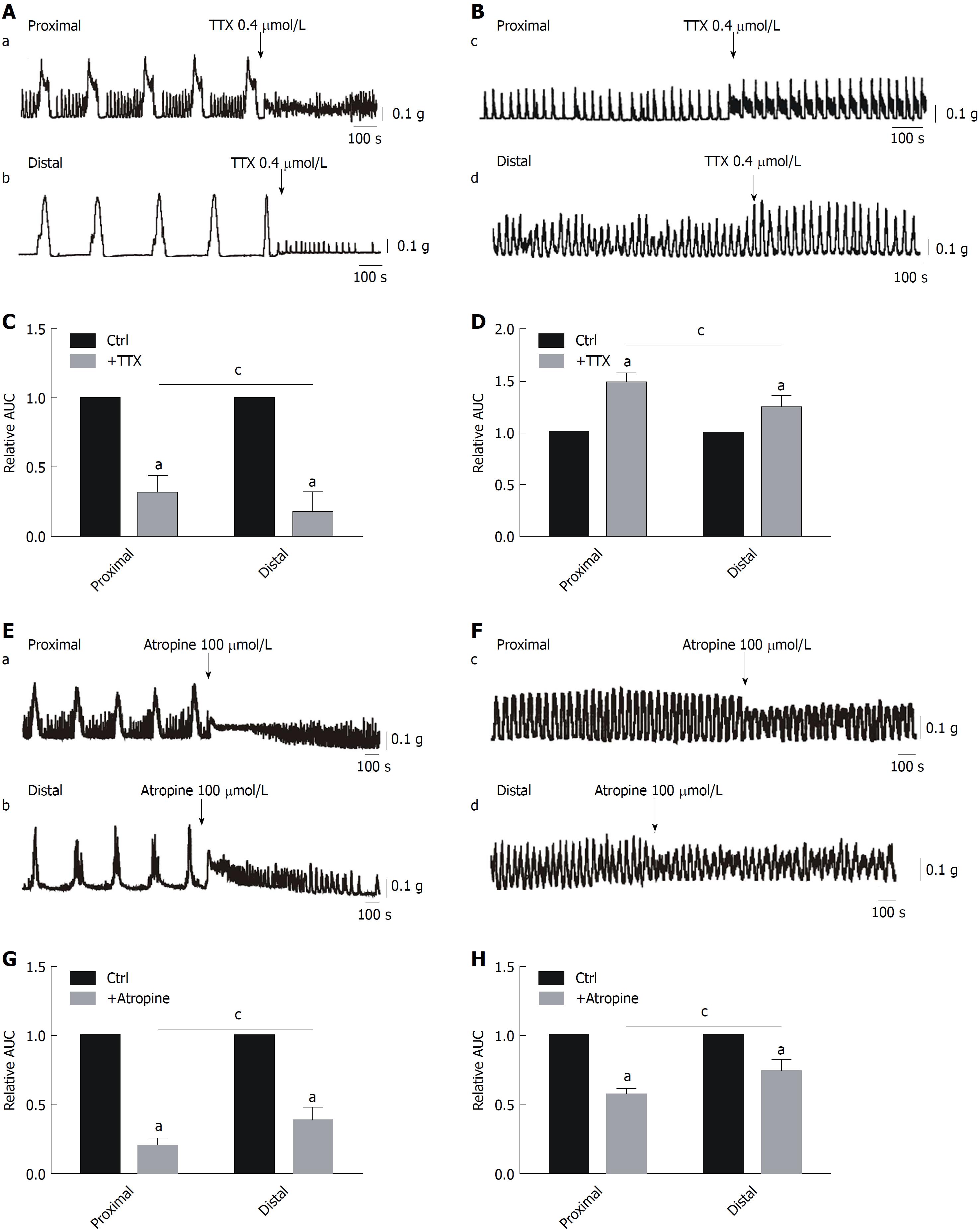Copyright
©The Author(s) 2018.
World J Gastroenterol. Nov 28, 2018; 24(44): 4989-5004
Published online Nov 28, 2018. doi: 10.3748/wjg.v24.i44.4989
Published online Nov 28, 2018. doi: 10.3748/wjg.v24.i44.4989
Figure 1 Effects of tetrodotoxin and atropine on smooth muscle contractions of the colon.
A and C: Inhibitory effects of tetrodotoxin (TTX) treatment on colonic migrating motor complexes (CMMCs) in the proximal and distal colon, and summary data of the area under the curve (AUC) at 300 s. It is worth noting that AUC measurements can demonstrate the sum of both the amplitudes and frequencies. The data are normalized to the control value (before the application of TTX) (n = 6; aP < 0.05 vs control; cP < 0.05 vs proximal colon). B and D: Enhanced effects of TTX on spontaneous contractions in the proximal and distal colon of mice and summary of the contractile responses to TTX, as indicated by the AUC at 200 s, in the smooth muscle tissues of the proximal and distal colon of mice. The data are normalized to the control value (before the application of TTX) (n = 7; aP < 0.05 vs control; cP < 0.05 vs proximal colon). E and G: Responses of CMMCs to atropine in the proximal and distal colon and summary of data as indicated by the AUC at 300 s. The data are normalized to the control value (before the application of atropine) (n = 5; aP < 0.05 vs control; cP < 0.05 vs proximal colon). F and H: Inhibitory effects of atropine on spontaneous contraction in the proximal and distal colon and summary of data showing contractile responses to atropine as indicated by the AUC at 200 s. The data are normalized to the control value (before the application of atropine) (n = 7; aP < 0.05 vs control; cP < 0.05 vs proximal colon). TTX: Tetrodotoxin; AUC: Area under the curve.
- Citation: Lu C, Huang X, Lu HL, Liu SH, Zang JY, Li YJ, Chen J, Xu WX. Different distributions of interstitial cells of Cajal and platelet-derived growth factor receptor-α positive cells in colonic smooth muscle cell/interstitial cell of Cajal/platelet-derived growth factor receptor-α positive cell syncytium in mice. World J Gastroenterol 2018; 24(44): 4989-5004
- URL: https://www.wjgnet.com/1007-9327/full/v24/i44/4989.htm
- DOI: https://dx.doi.org/10.3748/wjg.v24.i44.4989









